Casa Batlló (Catalan pronunciation: [ˈkazə βəʎˈʎo]) is a building restored by Antoni Gaudí and Josep Maria Jujol, built in 1877 and remodelled in the years 1904–1906; located at 43, Passeig de Gràcia (passeig is Catalan for promenade or avenue), part of the Illa de la Discòrdia (the "Block of Discord") in the Eixample district of Barcelona, Spain. Gaudí's assistants Domènec Sugrañes i Gras, Josep Canaleta y Joan Rubió also contributed to the renovation project.
The local name for the building is Casa dels ossos (House of Bones), as it has a visceral, skeletal organic quality. It was originally designed for a middle-class family and situated in a prosperous district of Barcelona.
The building looks very remarkable — like everything Gaudí designed, only identifiable as Modernisme or Art Nouveau in the broadest sense. The ground floor, in particular, is rather astonishing with tracery, irregular oval windows and flowing sculpted stone work.
It seems that the goal of the designer was to avoid straight lines completely. Much of the façade is decorated with a mosaic made of broken ceramic tiles (trencadís) that starts in shades of golden orange moving into greenish blues. The roof is arched and was likened to the back of a dragon or dinosaur. A common theory about the building is that the rounded feature to the left of centre, terminating at the top in a turret and cross, represents the lance of Saint George (patron saint of Catalonia, Gaudi's home), which has been plunged into the back of the dragon.
Facade
The facade has three distinct sections which are harmoniously integrated. The top displays a trim with ceramic pieces that has attracted multiple interpretations. The central part, which reaches the last floor, is a multicolored section with protruding balconies. The lower ground floor with the main floor and two first-floor galleries are contained in a structure of Montjuïc sandstone with undulating lines.
The top of the building is a crown, like a huge gable, which is at the same level as the roof and helps to conceal the room where there used to be water tanks. This room is currently empty. The roof's arched profile recalls the spine of a dragon with ceramic tiles for scales, and a small triangular window towards the right of the structure simulates the eye. Legend has it that it was once possible to see the Sagrada Familia through this window, which was being built simultaneously. The view of the Sagrada Familia is now blocked from this vantage point by newer buildings. The tiles were given a metallic sheen to simulate the varying scales of the monster, with the color grading from green on the right side, where the head begins, to deep blue and violet in the center, to red and pink on the left side of the building.
One of the highlights of the facade is a tower topped with a cross of four arms oriented to the cardinal directions. It is a bulbous, root-like structure that evokes plant life. There is a second bulb-shaped structure similarly reminiscent of a thalamus flower, which is represented by a cross with arms that are actually buds announcing the next flowering. The tower is decorated with monograms of Jesus (JHS), Maria (M with the ducal crown) and Joseph (JHP), made of ceramic pieces that stand out golden on the green background that covers the facade. These symbols show the deep religiosity of Gaudi, who was inspired by the contemporaneous construction of his basilica to choose the theme of the holy family. The bulb was broken when it was delivered, perhaps during transportation. Although the manufacturer committed to re-do the broken parts, Gaudí liked the aesthetic of the broken masonry and asked that the pieces be stuck to the main structure with lime mortar and held in with a brass ring. The central part of the facade evokes the surface of a lake with water lilies, reminiscent of Monet's Nymphéas, with gentle ripples and reflections caused by the glass and ceramic mosaic. It is a great undulating surface covered with plaster fragments of colored glass discs combined with 330 rounds of polychrome pottery. The discs were designed by Gaudí and Jujol between tests during their stay in Majorca, while working on the restoration of the Cathedral of Palma.
Finally, above the central part of the facade is a smaller balcony, also iron, with a different exterior aesthetic, closer to a local type of lily. Two iron arms were installed here to support a pulley to raise and lower furniture.
The facade of the main floor, made entirely in sandstone, and is supported by two columns. The design is complemented by joinery windows set with multicolored stained glass.[7] In front of the large windows, as if they were pillars that support the complex stone structure, there are six fine columns that seem to simulate the bones of a limb, with an apparent central articulation; in fact, this is a floral decoration. The rounded shapes of the gaps and the lip-like edges carved into the stone surrounding them create a semblance of a fully open mouth, for which the Casa Batlló has been nicknamed the "house of yawns." The structure repeats on the first floor and in the design of two windows at the ends forming galleries, but on the large central window there are two balconies as described above.

The Casa Batlló by day
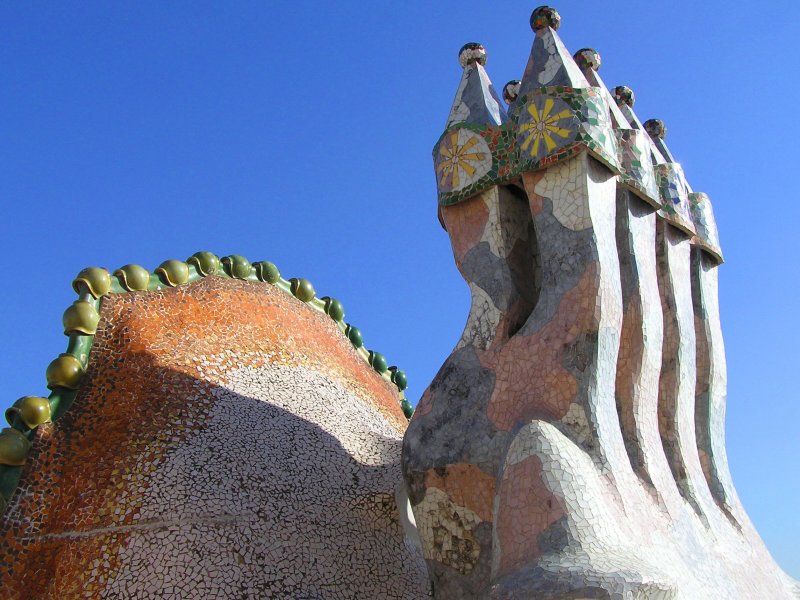
The arched roof and complex chimney detailing
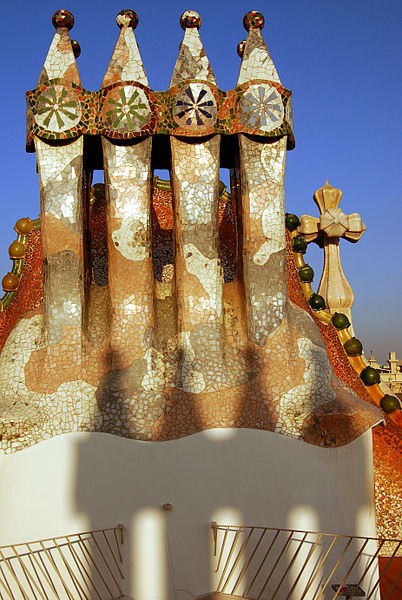
Close-up of a chimney

The unique design of the staircase and ceiling

Casa Batlló Central Light Well

Casa Batlló Fireplace
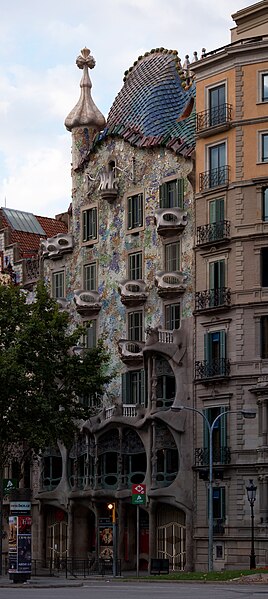
Casa Batlló

Close-up of Casa Batlló
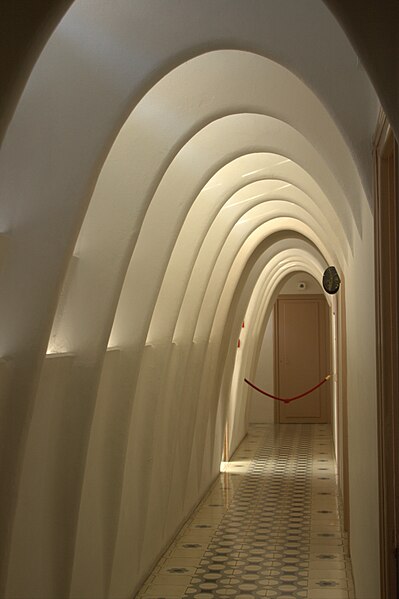
Casa Batlló Catenary Arches
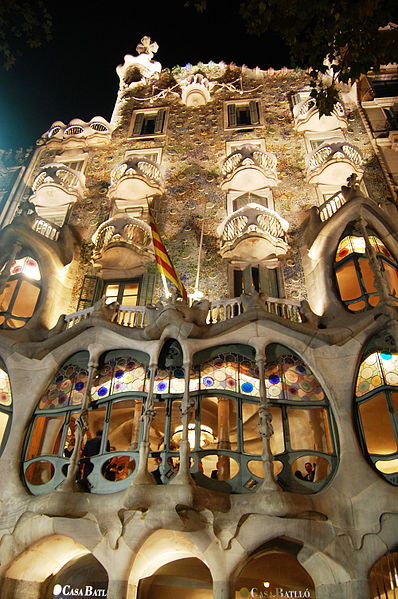
The Casa Batlló by night
No comments:
Post a Comment